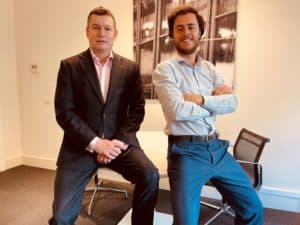 In mid-2019, Spanish asset manager Bestinver acquired local boutique Fidentiis in a deal that added around €350 million in assets under management to Bestinver’s €7 billion portfolio.
In mid-2019, Spanish asset manager Bestinver acquired local boutique Fidentiis in a deal that added around €350 million in assets under management to Bestinver’s €7 billion portfolio.
The merger increased the number of funds, portfolio managers and analysts at Bestinver, creating a unique challenge for the two traders that cover execution for the firm as the world battled the global pandemic.
Based in Madrid, head of trading, Alex Roselló, and equity trader, Gustavo Iglesias, are responsible for all execution at Bestinver, trading mostly equities across EMEA, US, Latin America and Asia markets for all funds. It is traditionally a long-only fund asset manager, but it also has a hedge value fund that holds derivatives and shorts, as well as a domestic long short fund.
The two-strong trading operation functions much like a UK desk compared to the traditional domestic Spanish buy-side centralised desk, with strong influence from the City of London as many portfolio managers, both past and present, spent most of their careers in the Square Mile.
Roselló also spent time previously during his career in London working on the sell-side for Deutsche Bank and KBW before his move to Bestinver in Madrid in 2015. Similarly, Iglesias previously worked on the sell-side before he started out at Bestinver three years ago. While Roselló puts emphasis on the strengths of his relationships, Iglesias has developed a technical skillset, learning about coding and developing tools and taking charge of the desk’s vital transaction cost analysis (TCA) processes.
Both traders agree their experience has provided a well-rounded understanding of how both sides of the market operate and cemented all-important relationships in the industry that impact the desk’s access to information and best practices.
“When I started out at Bestinver to run the desk it was as though we had order clerks in the sense that they would pick up an order, send it straight through to a broker and pick up the execution at the end of the day with little intraday input,” Roselló explains.
“I was used to the UK buy-side desk. We started to remove the processes of passing the whole working order to the broker and began looking for the big liquidity in different places and trading based on merit and the volume they could source. Although we’re based in Spain, in many ways we trade as though we are a London buy-side desk in Madrid.”
Switching up strategy
For Roselló and Iglesias, the transition to remote trading due to the global coronavirus pandemic was somewhat more critical than for firms with a larger team of traders given the difficulty if both were to fall ill at the same time. Although adapting to working from home was relatively smooth, contending with intense market volatility and additional funds from the Fidentiis merger, which doubled the number of orders that needed executing and increased their notional volume by more than 50%, proved more challenging.
As blocks in conditional crossing networks increased in the early stages of the volatility, the traders found it difficult to convince high-touch traders to cross as they preferred to execute small blocks and trade over the session. This improved in the months after the summer in 2020, but it forced Roselló and Iglesias to rethink their strategy on the algorithms they used to improve and speed up their liquidity seeking processes.
“We were trading more electronic at first, including blocks in crossing networks. In the beginning it became more difficult to reach people on the high-touch side and we often heard about working from home as an excuse for delays,” Roselló says.
“Not all firms were well prepared and organised at first. Once the volatility kicked in, natural blocks became much harder to find and there was a preference for counterparties to work orders rather than cross size at a price that could look bad at the end of the day.”
The strategy also changes considerably according to the market the traders are dealing with. Iglesias believes studying and adapting to ever-evolving market structure globally is one of the greatest challenges for buy-side traders sourcing liquidity today. In one example, he reveals that data following an in-depth TCA analysis in 2019 flagged high costs in US executions, which accounted for roughly one-fifth of the trading desk’s total volume that year.
After further investigation, analysis of trading strategy and discussions with experts, the traders adjusted their strategy based on the variations in US and European market structure. The new strategy was to seek more blocks, increase use of electronic trading and strengthen relationships with US counterparts.
“The US market may appear liquid and straight-forward at first, but it’s a bigger challenge than one may think knowing that the market structure has little to do with European market structure,” Iglesias says.
“Through TCA we found that our US execution costs were above average and we experienced some signalling risk due to the fragmented nature of the market. We moved to maximising block liquidity, adapted our algos to access the right venues and acted bold at our arrival, transforming the US into one of our top performers. Strengthening our US relationships, and establishing new ones, has definitely made a difference too.
“We constantly monitor our trades to find those patterns that steepen our learning curve. We strive to understand the reasons behind our under- or over-performance in execution. The largest challenge in analysing big data is getting meaningful insights that show a significant explanatory power – it needs a lot of hard work before anything starts to make sense.”
 Coverage and juniorisation
Coverage and juniorisation
The trading desk does not automate much trading activity as they mostly trade large orders with multiple day’s volume. Like many buy-side traders, the duo strives to add value on every single transaction. Lower nominal trades for smaller funds often present opportunities for the pair to considerably reduce implicit costs by choosing the right strategy, which may differ day-to-day.
“For smaller trades, automation can be tricky when we see the liquidity structure changing constantly,” Iglesias adds. “We are all aware how the focus on both research and liquidity has moved away from the smaller companies. We understand the challenge local brokers are facing. But at the end of the day, there is a lot of alpha in that local expertise. They may find that unique liquidity that will save the day for us as traders. We place a huge value on the local brokers that we have.”
Brexit has presented further coverage challenges for both traders. As a relatively small asset manager based in Spain, if the traders are speaking to a broker in Madrid that may not be able to cater to their needs, they often turn to the London desk for additional support.
However, as market structure shifted post-Brexit, Roselló explains coverage from many of the desk’s UK broker contacts has worsened. There is some confusion among brokers on how best to service European clients post-Brexit and each firm has a different interpretation. This has been detrimental to the desk’s important relationships in London.
“As a European firm we have found difficulties in coverage,” Roselló adds. “We previously had a lot of access and valued our relationships with sales traders and dealing directly with the trading desks in London. But due to different interpretations, it was as if we were cut off by many and some of the UK desks wouldn’t service us as they did before.
“This meant we were often having to speak to desks in other European hubs where we didn’t have the relationships, and in most cases, with more junior coverage. It doesn’t matter very much for asset managers based in the UK because it’s seamless, but as a European buy-side house that trades UK and global markets through the UK desks, it has been incredibly tricky for us.”
Despite the London influence, Bestinver remains a Spanish firm with three large domestic funds. Following the merger with Fidentiis, the desk’s flow in Iberia has trebled but Roselló points out that the size of the Spanish market remains the same.
With three times the volume in a market that hasn’t changed, liquidity has become tougher to find for both traders. But as the new portfolio managers joined Bestinver after the acquisition having not had traders at their former firm, Roselló says the benefits of a centralised buy-side dealing desk have come to the fore.
“Our new portfolio managers have been pleased and appreciate the implicit costs you can save by having a good trading desk,” Roselló adds. “It adds value to them, the funds and the investors. There are technologies being developed that some people worry will one day take over buy-side traders, but we really see technology as empowering, and you must use new technology to your benefit.”
For the two-strong trading team at Bestinver, despite the challenges in coverage and evolving market structure, their goal remains sourcing blocks and liquidity. As they continue to navigate more complex relationships with their brokers and handle the huge uptick in volumes post-merger, both Roselló and Iglesias are rightly proud of their ability to adapt as a team during this period.
“In our business, it’s a constant learning process seeing the markets evolve at the speed of light. As buy-side traders we should learn from each other and be smart about the way we use technology. It is the art behind adapting our strategies to better approach liquidity that should make us unique,” Iglesias concludes.